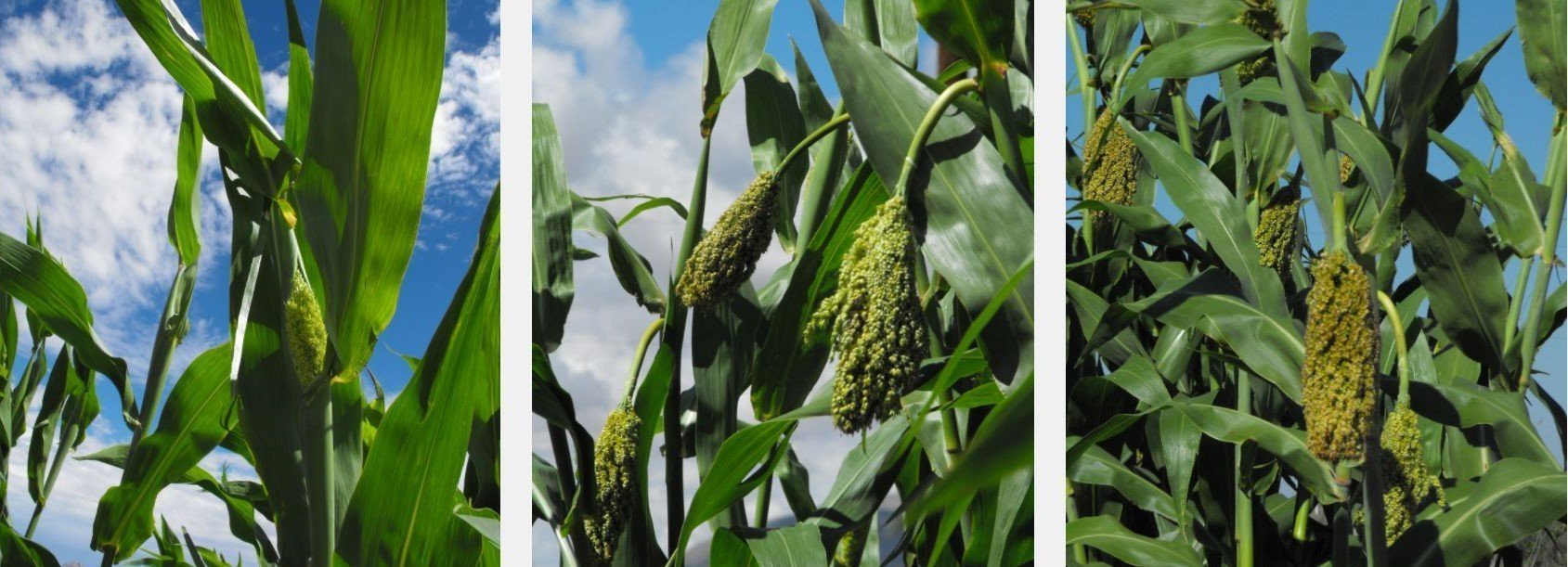INGREDIENTS
This is what you need:
- black sorghum seed
2014-2015
Black-seeded sorghum, aka caña dulce = sweet stick among the Hispanics. Despite the Spanish name, this is very different from sugar cane, but it has similar uses. The plant juice can be extracted in a pulping machine and then boiled down to a sugar syrup.
- While both sorghum and molasses arrived in the United States during the 17th century, they have very different origin stories. The sorghum plant, which is a grass, arrived with the African slave trade and spread throughout the American south due to its resilience against hot temperatures and dry conditions. The syrup was then developed as a sugar and molasses alternative.
Molasses, on the other hand, was brought to the U.S. from the Caribbean, the epicenter of the sugar cane industry, to be used in rum production. Up until the 19th century, molasses was even more popular than sugar due to its cheaper cost.- Sorghum syrup is made from the green juice of the sorghum plant, which is extracted from the crushed stalks and then heated to steam off the excess water leaving the syrup behind.
Conversely, molasses is the by-product of processing sugar cane into sugar. Sugar cane is stripped of its leaves and the juice is extracted from the cane by crushing or mashing. The juice is then boiled to concentrate it, which produces crystallization of the sugar.- Sorghum tends to have a thinner consistency than molasses, along with a slightly more sour taste.
Additionally, molasses comes in multiple varieties. When molasses undergoes its first boiling and the sugar crystals are removed, the result is called “first molasses,” which is its sweetest form. “Second molasses,” which is considerably milder, is created from a second boiling and then “backstrap” is the result of a third boiling. It's considered bittersweet.- While using either one is mostly just a matter of personal preference, molasses is traditionally used for baking in the U.S., while sorghum is more popular as a syrup on its own or as an ingredient in salad dressings and barbecue sauces.
MY COMMENTS:
I grew sorghum mainly because I could. My neighbor had given me a head of seeds.
Unlike corn which was a disaster here, sorghum grew very well and I have not seen any signs of pests or diseases. The stalks are up to 8 ft. tall, and much more wind-resistant than corn. I planted it 2015 as a windbreak, but even sorghum was not able to withstand the tornado that razed the entire vegetable garden.
This sorghum variety has hanging seed heads and the seeds turn black after harvest.
This is what you need:
 Pic1: sorghum with a standing seed stalk
Pic1: sorghum with a standing seed stalkDevelopment of the sorghum plant
 Pic2: 2014-07-09 = the big summer heat is already here.
Pic2: 2014-07-09 = the big summer heat is already here.
Development of the hanging seed head
 Pic5: 2014-09-11
Pic5: 2014-09-11After the harvest:
 Pic8+9: 2014-10-20
Pic8+9: 2014-10-20
internet pictures
 Pic11+12: sorghum syrup
Pic11+12: sorghum syrup